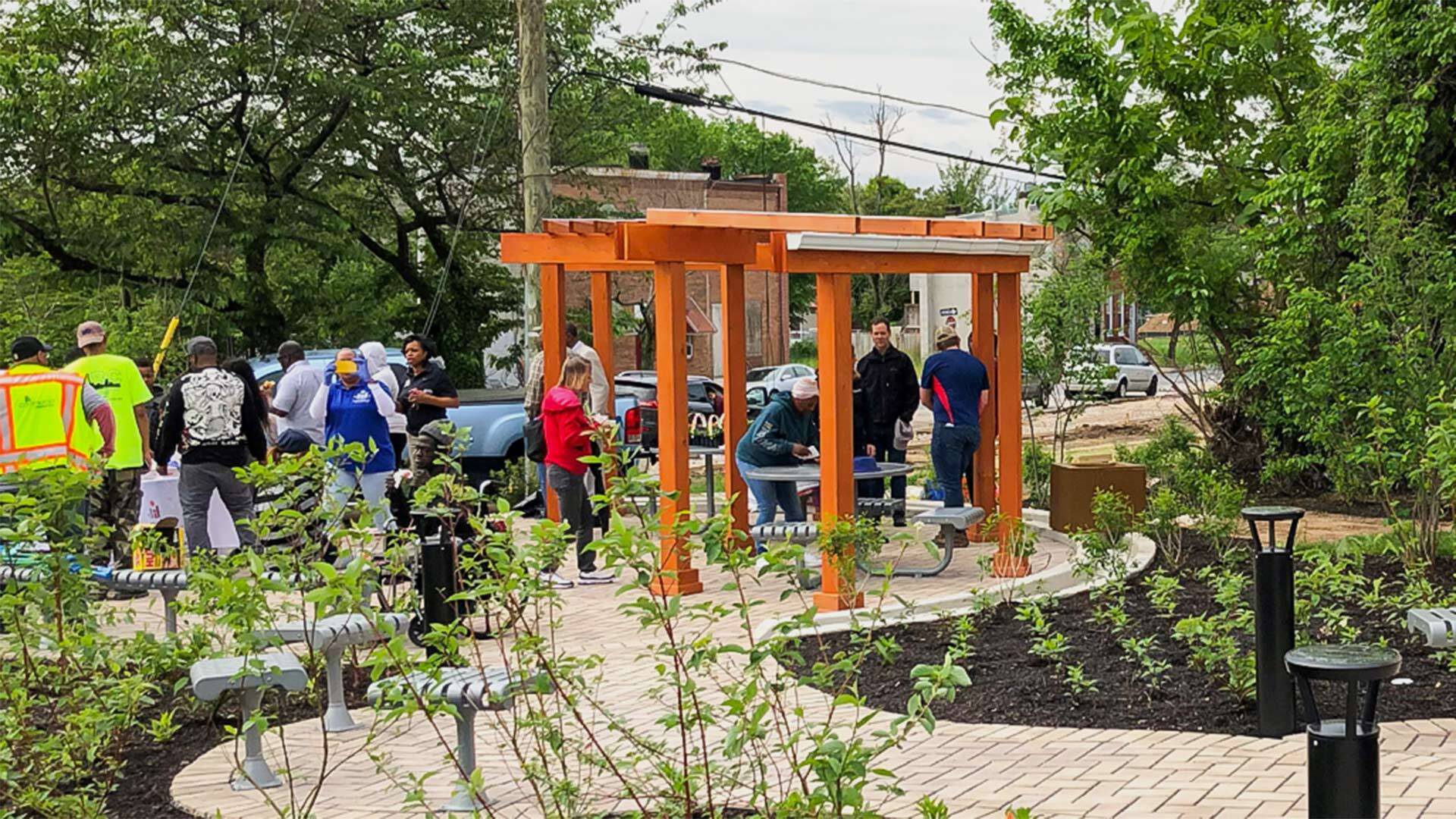- February 10, 2020
- By Samantha Watters
A historic Baltimore neighborhood that was once home to Supreme Court Justice Thurgood Marshall, jazz great Cab Calloway and ragtime composer Eubie Blake is celebrating its ongoing revitalization through a new park designed in part by UMD landscape architecture students.
Archway Park, located in Druid Heights, features native plants, seating and brick paths, and educational banners on prominent residents and ecology. Students in Associate Professor Byoung-Suk Kweon’s studio class worked with the Maryland Department of Natural Resources and community members to establish the park at the corner of Druid Hill and North avenues, an area that has struggled with blight and crime.
“Revitalizing this corner shows the residents that we can start right here at the top of the neighborhood, the archway of the community, and make some changes that will spread throughout. The residents will defend the space and celebrate the legendary people from historic Druid Heights,” said Anthony Pressley, executive director of the nonprofit Druid Heights Community Development Corp.
The West Baltimore neighborhood was once an affluent African American community known for its brightly colored rowhouses, jazz joints and exclusive Sphinx Club. But it fell into blight following the 1968 riots, and has struggled with crime and poverty. Pressley’s group advocates for the community’s renewal.
Kweon’s 18 students presented designs at the end of the Spring 2018 semester for the community’s input, and ones by Ryan Young and Mia Manning were chosen to be combined to create the final design. They gathered additional community feedback as part of a summer and fall semester internship following the class. Then, Young stayed on one more semester to see the project through every aspect of its development, from construction to plant selection.
“This work was as community-driven as we could make it. We really wanted it to be their park, and we were just helping facilitate the construction and design,” Young said. “Mr. Pressley called this park a ‘welcome mat’ for the community, so we really took that seriously when we thought about our designs.”
In addition to incorporating the history of the Druid Heights community through banners on prominent residents such as Blake and Calloway, the park’s design prominently focuses on ecology and stormwater management. Archway Park is graded so that when it rains, visitors can sit under the pergola and watch the water being guided down the path and into a drain, eventually swirling and channeling into a rain garden and rain barrels to infiltrate the water and feed the native plant life.
“The idea was that the more people who are aware of stormwater management and start thinking about where stormwater goes, the more people will actually care about this as an issue and be more open to projects that try to address it,” said Young.
In addition to funding from the Department of Natural Resources’ Chesapeake Bay and Coastal Bays Trust Fund, the community secured funding from the state’s Department of Housing and Community Development to make this space ecologically and socially functional, while adding value to the community and acting as a draw for future development.
“This is a community that is committed to revitalizing their neighborhood, and at the same time, they really get the value of green space,” said Sandi Olek, environmental planner with DNR. “As a funding agency, we have larger bay restoration goals, and although this project is small, it is the cumulative impact of many projects like this that will make a difference.”
Kweon said the partnership between the College of Agriculture and Natural Resources, DNR, the Department of Housing and Community Development and the community was critical.
“Without the funding from DNR and community momentum, our designs are just pretty drawings,” she said. “We have so many pretty drawings, but when our drawings can become reality, we really appreciate that.”
